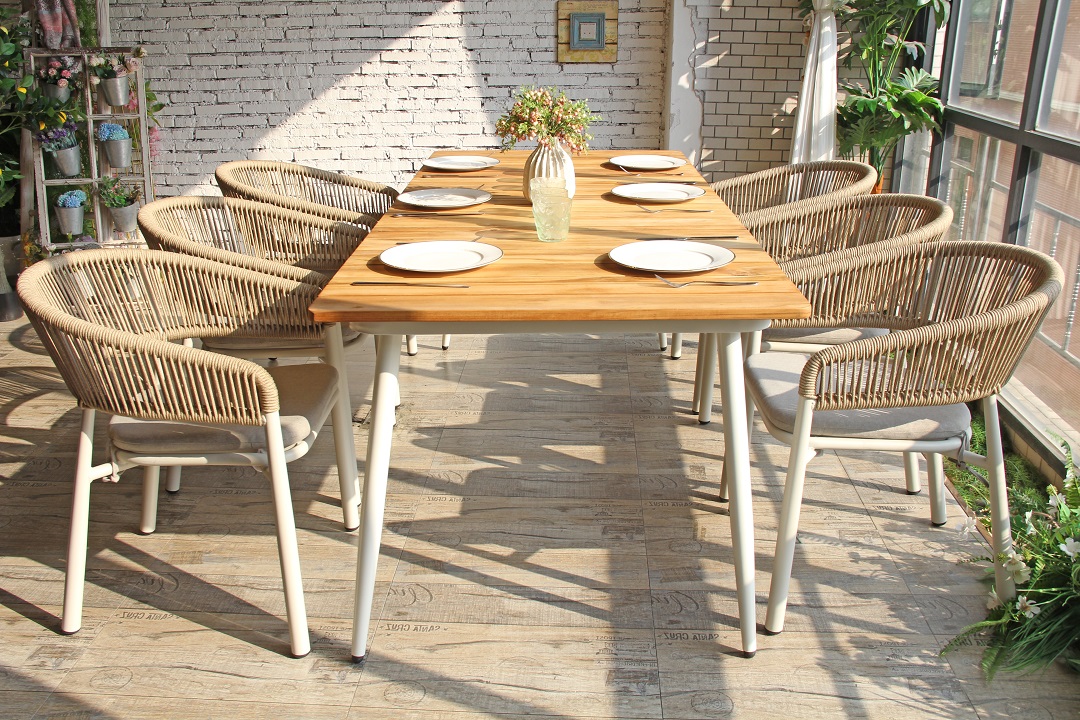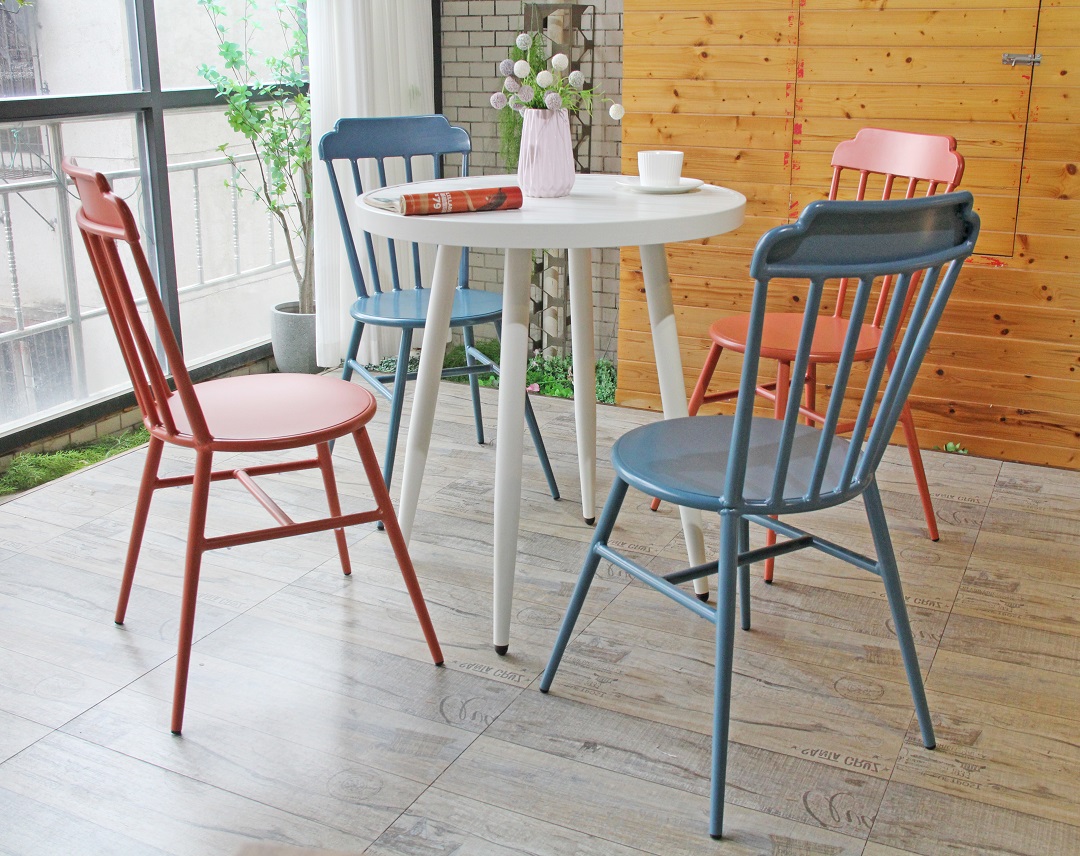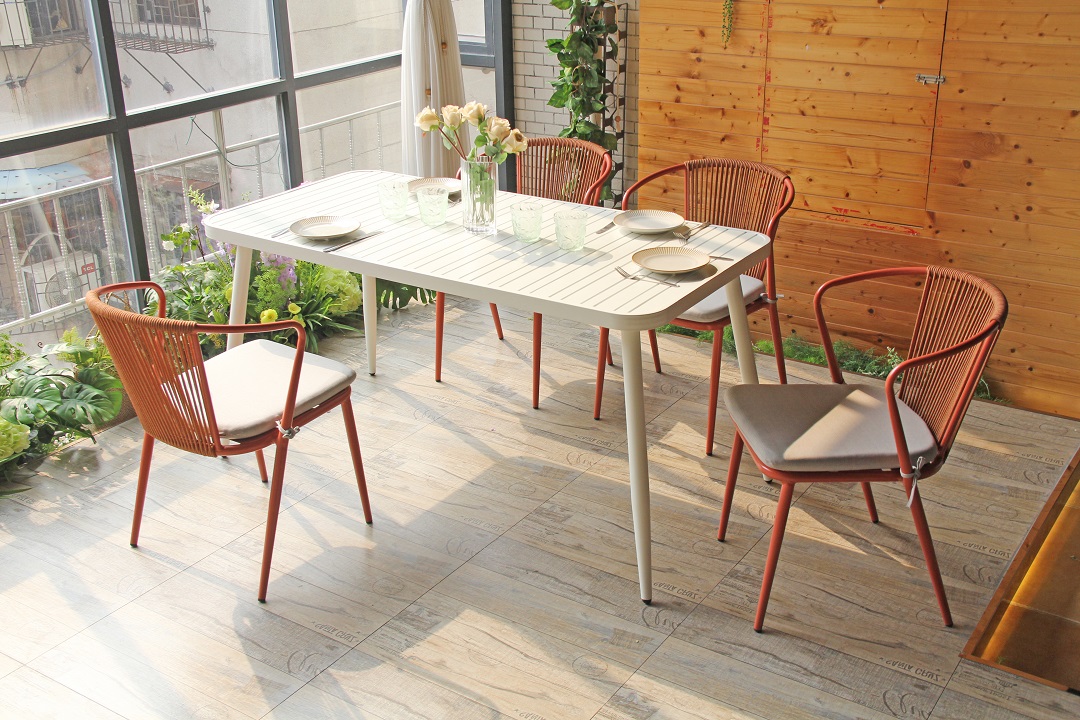In the warm and comfortable outdoor garden, carefully selected outdoor garden furniture is placed, which not only adds beauty to the garden, but also becomes an important partner for us to enjoy outdoor leisure time. However, outdoor environments are complex and ever-changing, and factors such as sunlight, rain, and dust can all cause damage to furniture. In order to keep outdoor garden furniture in good condition and extend its service life, we need to carry out targeted maintenance according to seasonal changes.
General cleaning tips for all materials
It is crucial to master some basic cleaning solutions and methods before starting special care for different materials. For most outdoor garden furniture, we can use mild soapy water for cleaning. Dissolve an appropriate amount of soap in warm water, dip a soft cloth or sponge in soapy water, and gently wipe the surface of furniture to effectively remove dust and daily dirt.
If there are stubborn stains on the surface of furniture, such as oil stains, bird droppings, etc., specialized outdoor cleaners can be used. But before use, it is necessary to conduct a small area test in an inconspicuous place on the furniture to ensure that the cleaning agent will not cause damage to the furniture. When cleaning, be careful to avoid using overly rough brushes or scouring pads to prevent scratching the surface of furniture. After cleaning, rinse the furniture with clean water and then dry it with a clean towel to prevent moisture residue from causing mold or rust on the furniture.
Special care for materials
Teak Outdoor Garden Furniture
Teak wood is a high-quality outdoor furniture material with natural anti-corrosion and weather resistance. But in order to maintain its beauty and durability, regular special care is still needed.
In terms of cleaning, in addition to using mild soapy water, teak specific cleaning agents can also be used, which can thoroughly clean the dirt in the wood texture. After cleaning, wait for the furniture to completely dry. The next step is sealing treatment. Regularly applying teak sealant can prevent moisture from penetrating into the interior of the wood, reducing the risk of cracking and deformation. Oiling is also an essential step. Using teak oil for maintenance can not only maintain the luster of furniture, but also enhance the waterproof performance of wood. In addition, although teak itself has anti-corrosion properties, in extremely humid or rainy environments, it can be considered to use preservatives for additional protection to extend the service life of furniture.
Vine woven outdoor garden furniture
Vine woven furniture is loved by people for its natural and rustic style, but it is more sensitive to the environment, easily affected by moisture and UV radiation.
When cleaning wicker furniture, you can use a soft cloth or vacuum cleaner to remove surface dust. For stubborn stains, you can gently wipe them with mild soapy water, but be careful not to let too much moisture penetrate into the inside of the rattan. Sunscreen is the key to protecting rattan furniture. Try to avoid exposing the furniture to strong sunlight for a long time and use a sunshade or canopy to cover it. In humid weather, special attention should be paid to moisture prevention by placing desiccants around furniture or using fans to promote air circulation and keep furniture dry.
Metal outdoor garden furniture (mainly made of aluminum and iron)
Metal furniture is sturdy and durable, but it is prone to rusting and corrosion, so rust prevention, painting, and regular cleaning are the focus of maintenance.
Regularly inspect the surface of metal furniture for rust. Once found, immediately use sandpaper or wire brush to remove the rust, and then apply anti rust paint to prevent further spread of rust. To maintain the beauty and durability of furniture, it is recommended to regularly apply outdoor specific paint. In terms of cleaning, use mild soapy water or metal cleaners, and avoid using overly strong chemical cleaners to avoid damaging the coating on the metal surface. After cleaning, furniture should be wiped dry in a timely manner to prevent moisture residue from causing rust.
Plastic wood outdoor garden furniture
Plastic wood furniture combines the advantages of plastic and wood, with features such as waterproofing, moisture resistance, and corrosion resistance, but still requires appropriate maintenance.
When cleaning plastic wood furniture, using mild soapy water can easily remove surface dirt. To prevent furniture from fading, try to avoid exposing it to sunlight for a long time and use shading facilities to cover it. In addition, although plastic wood materials have certain flame retardancy, it is still necessary to avoid direct contact of fire sources with furniture surfaces to prevent accidents.
Seasonal maintenance inspection
Spring preparation
After a cold winter, outdoor garden furniture may accumulate dust and dirt, and even show some damage. In spring, furniture should be thoroughly cleaned using the cleaning methods mentioned above to remove dust and dirt from the surface of the furniture. At the same time, carefully inspect the furniture for any damaged areas such as cracks, looseness, etc. If any problems are found, they should be repaired or replaced in a timely manner to ensure that the furniture can be used normally in the new season.
Summer care
The strong sunshine and frequent rainfall in summer pose a significant challenge to outdoor garden furniture. Regularly clean the surface of furniture to keep it clean and tidy. At the same time, take sun protection measures such as using umbrellas, awnings, or moving furniture to a cool place to avoid prolonged exposure to sunlight, which can cause fading and aging of the furniture. For metal furniture, special attention should be paid to preventing rainwater accumulation, drying off moisture in a timely manner, and preventing rust.
Autumn preparation
Autumn is the off-season for outdoor activities, as well as the time for deep cleaning and preparation for storage of outdoor garden furniture. Thoroughly clean furniture, including gaps and corners. After cleaning, check whether the various components of the furniture are intact, and if necessary, perform some simple repairs and maintenance. Then, store the furniture properly, choose a dry and ventilated place, and avoid the furniture from being affected by moisture and pests.
Winter storage
In winter, outdoor garden furniture should be stored properly. Firstly, dry the surface moisture of the furniture, and then cover it with a dust cover or plastic cloth to prevent dust and dirt from falling on it. For some detachable furniture components, such as chair cushions, backrests, etc., they can be disassembled and stored separately to save space. During storage, attention should be paid to the placement of furniture to avoid compression and deformation.
Fix common issues
During use, outdoor garden furniture may encounter issues such as scratches, rust, and fading. For scratches, you can use sandpaper to gently polish the scratch area, then fill it with repair paste that is similar in color to the furniture, and finally polish it smooth with fine sandpaper. For rusted metal furniture, follow the rust prevention treatment method mentioned earlier. For faded furniture, you can consider repainting it with outdoor specific paint or using a dye to restore its beauty.
Conclusion
Outdoor garden furniture is an important component of our enjoyment of outdoor life. By following the seasonal maintenance guidelines mentioned above, we can effectively protect outdoor garden furniture and extend its lifespan. In the years to come, let us continue to make good use of these carefully maintained outdoor garden furniture, spend more warm and comfortable time with family and friends in the beautiful outdoor garden, and feel the charm of nature.



